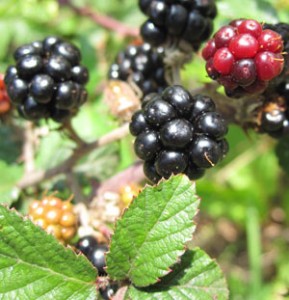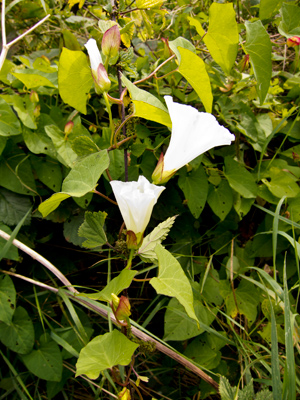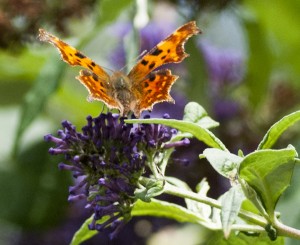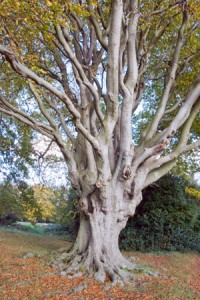Richard Mabey’s Weeds and Beechcombings

Richard Mabey is one of Britain’s most compelling writers on our natural and not-so-natural environments and the botanical wonders to be found amongst them. He introduced a whole new generation to the joys of foraging with his breakthrough 1972 publication Food for Free, while his essential 1996 Flora Britannica was an ambitious attempt to exhaustively catalogue all the native and naturalised plants that grow within the British Isles.
What makes Mabey such a pleasurable and informative read is the affable yet authoritative first person voice he brings to his writing, an aspect particularly noteworthy in Nature Cure (2005), in which he charts his recovery from a severe bout of depression and writer’s block by immersing himself within the flatland landscapes of East Anglia, discovering a whole new terrain in which to reformulate his ideas on man’s place in nature.
 Two books particularly characteristic of Mabey’s approach are Beechcombings: The Narratives of Trees (2007) and Weeds: The Story of Outlaw Plants (2010), which on some editions boasts the alternate subtitles, ‘How Vagabond Plants Gatecrashed Civilisation and Changed the Way We Think About Nature’ or ‘In Defence of Nature’s Most Unloved Plants’. This latter work perhaps derives from certain conundrums raised during Mabey’s own experience during the five years he worked on Flora Britannica. What plants are actually native to the United Kingdom, when did they first arrive, and when does a wildflower become a weed?
Two books particularly characteristic of Mabey’s approach are Beechcombings: The Narratives of Trees (2007) and Weeds: The Story of Outlaw Plants (2010), which on some editions boasts the alternate subtitles, ‘How Vagabond Plants Gatecrashed Civilisation and Changed the Way We Think About Nature’ or ‘In Defence of Nature’s Most Unloved Plants’. This latter work perhaps derives from certain conundrums raised during Mabey’s own experience during the five years he worked on Flora Britannica. What plants are actually native to the United Kingdom, when did they first arrive, and when does a wildflower become a weed?
The old gardening adage has it that a weed is simply a plant in the wrong place. Mabey begins his account with his own definition that “plants become weeds when they obstruct our plans, or our tidy maps of the world. If you have no such plans of maps, they can appear as innocents, without stigma or blame.” Each of the chapters in Weeds revolves around a particular culprit, such as knotgrass or burdock, although they take in a whole lot more species that similarly seem to thrive without human intervention, from daffodils, poppies and particular orchids to nettles, nightshade, fat hen and bindweed. The book looks at both the environmental and political context in which they arrived on British soils, and their role in culture, art and literature since medieval times. One example from the tree world is the Horse Chestnut, technically an “alien” but culturally domesticated over the years through children’s conker games and now very much a familiar part of our surroundings.
 Mabey details how many such plants take root in environments to which they are best suited and where there is little competition. Take, for example, the Buddleia: originating from the mountainous border between China and Tibet, it was first introduced to Europe in 1880, spread along the arid wastelands alongside train tracks, and is now regularly seen sprouting from the walls and rooftops of abandoned urban buildings.
Mabey details how many such plants take root in environments to which they are best suited and where there is little competition. Take, for example, the Buddleia: originating from the mountainous border between China and Tibet, it was first introduced to Europe in 1880, spread along the arid wastelands alongside train tracks, and is now regularly seen sprouting from the walls and rooftops of abandoned urban buildings.
Also important are the new ecosystems that develop around these interlopers, which Mabey argues are “part of nature’s immune system”, springing up to green the broken soils and unused or unusable spaces abandoned by humans. He also mounts a controversial defence of the vigorously invasive Japanese Knotweed, a plant regarded as Public Enemy No. 1 by environmentalists. Throughout, Weeds encourages us to reassess what is natural, useful or cosmetic in the world around us.
 Beechcombings is similarly fascinating, particularly in Mabey’s choice of such a commonplace tree as the beech, rather than the more iconic mighty oak, to frame his discussions about the issues surrounding British woodlands, their history and their management. Classified as native, Mabey dates the beech’s arrival on the British Isles around 6th century BC, “at least a thousand years in advance of the first wave of farmers from the Mediterranean”, although “in the wake of the oak, alder, lime, elm and ash.”
Beechcombings is similarly fascinating, particularly in Mabey’s choice of such a commonplace tree as the beech, rather than the more iconic mighty oak, to frame his discussions about the issues surrounding British woodlands, their history and their management. Classified as native, Mabey dates the beech’s arrival on the British Isles around 6th century BC, “at least a thousand years in advance of the first wave of farmers from the Mediterranean”, although “in the wake of the oak, alder, lime, elm and ash.”
What the book offers is a challenge to the idea of an England whose every acre was coated with lush primeval forest, arguing that its woodlands have long been manipulated by human hand and exploited as an economic resource. Mabey discusses the environmental and political factors, such as thin soils and the ransacking of forests for timber for the military and navy in the 17th and 18th centuries, that allowed the beech to flourish across Great Britain.
Again, while looking at depictions and descriptions of beech woods in art and literature, and relating the aesthetic tastes for taming nature that brought about the landscaping of parks and the grounds of stately homes, the discussion moves into the environments and ecosystems that emerge alongside the beech, with evocative descriptions of the flowers, fungi and animals associated with them.
Comments are closed for this post.
